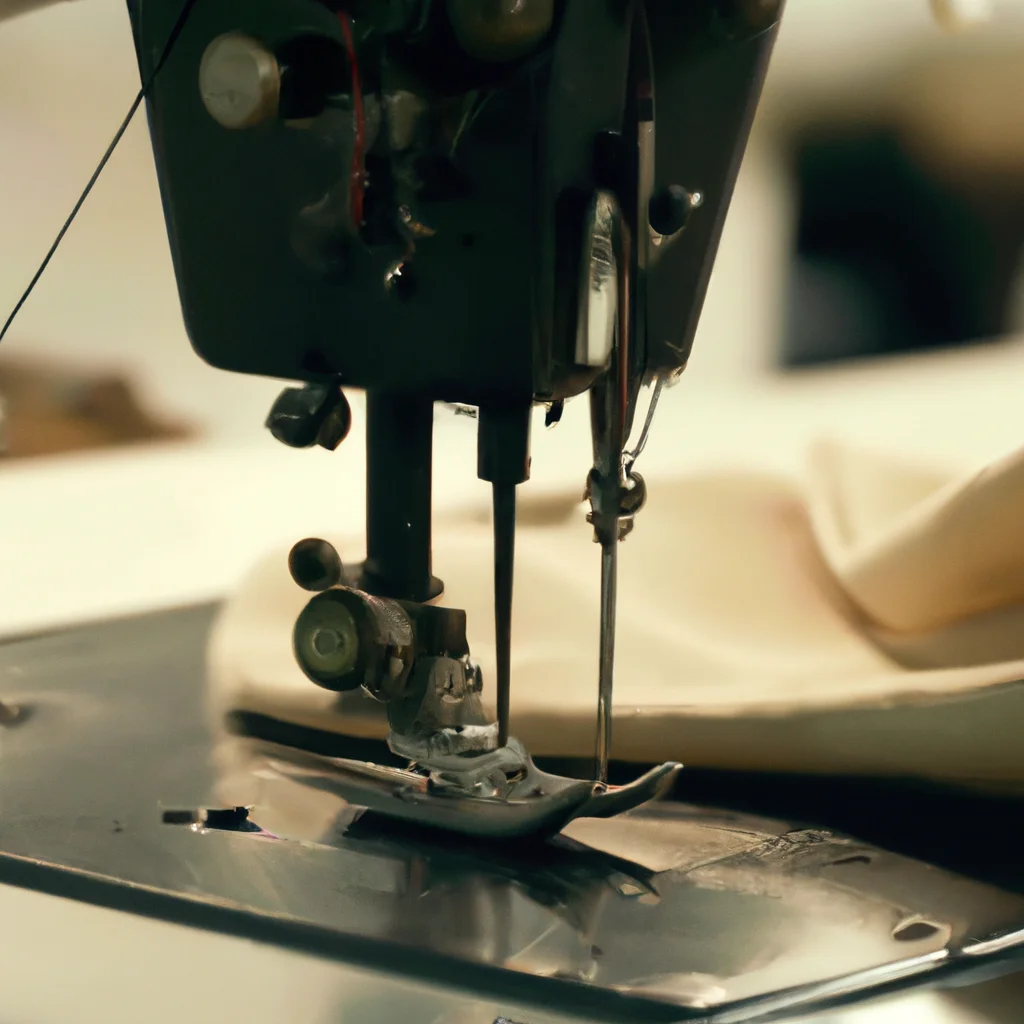How does a sewing machine sew fabric?


How does a sewing machine sew fabric?
Sewing machines have revolutionized the way we sew. They are versatile, efficient, and can sew through various types of fabric. But how exactly does a sewing machine sew fabric? In this article, we will take a closer look at the process and the various components involved in sewing fabric using a sewing machine.
The Stitch
The stitch is the basic unit of sewing. It is formed by the needle as it penetrates the fabric, loops the thread, and pulls it through the fabric. The sewing machine uses a variety of stitches to create different effects, from straight stitches to zigzag stitches, and even decorative stitches.
The Needle
The needle is the most crucial component of the sewing machine. It is responsible for piercing the fabric and creating the stitch. The needle is designed to have a sharp point and a long groove that holds the thread as it penetrates the fabric.
Thread Tension
Thread tension is essential in ensuring that the stitches are even and do not unravel. The sewing machine has a tension mechanism that regulates the thread’s tension as it is fed through the machine. The tension mechanism can be adjusted to suit different types of fabric and sewing techniques.
Bobbin
The bobbin is a small spool that holds the lower thread. It is placed in the bobbin case, which is located under the needle plate. The bobbin thread is looped with the needle thread to form the stitch.
Stitch Length
Stitch length determines the distance between each stitch. The sewing machine has a mechanism that regulates the stitch length. Longer stitches are suitable for heavier fabrics, while shorter stitches are ideal for lighter fabrics.
Sewing Speed
Sewing speed is controlled by the foot pedal. The faster you press the pedal, the faster the sewing machine sews. It is essential to maintain a consistent speed to ensure even stitches and avoid mistakes.
Sewing Foot
The sewing foot is located at the base of the sewing machine. It holds the fabric in place as it is fed through the machine. The sewing foot can be changed depending on the sewing technique and the type of fabric.
How a Sewing Machine Works
The sewing machine works by feeding fabric through two layers of thread, the needle thread, and the bobbin thread. The needle thread is fed through the needle, while the bobbin thread is fed through the bobbin case. The two threads are looped together to form the stitch.
The sewing machine’s needle moves up and down, piercing the fabric and creating holes for the thread to pass through. The bobbin thread is fed through a shuttle mechanism that moves back and forth, creating the loop that the needle thread catches to form the stitch.
As the fabric is fed through the sewing machine, the sewing foot holds it in place, ensuring that it moves smoothly and evenly. The thread tension mechanism regulates the tension of the thread, ensuring that the stitches are even and do not unravel.
Different sewing techniques require different stitches and adjustments to the sewing machine. For example, sewing a straight stitch requires a longer stitch length, while sewing a zigzag stitch requires a shorter stitch length and a zigzag foot.
Conclusion
In conclusion, a sewing machine sews fabric by feeding it through two layers of thread, the needle thread and the bobbin thread. The needle pierces the fabric, creating holes for the thread to pass through, while the bobbin thread is looped to form the stitch. The thread tension mechanism, bobbin, stitch length, sewing speed, and sewing foot all work together to ensure even stitches and a smooth sewing process. By understanding how a sewing machine works, you can improve your sewing skills and create beautiful and professional-looking garments.
Recent Posts
How do I create an engaging and informative online quiz or assessment?
Creating an engaging and informative online quiz or assessment can be a powerful tool for… Read More
What are the most effective methods for managing and reducing work-related stress in the hospitality industry?
Work-related stress is a common issue in the hospitality industry, where employees often face long… Read More
How can I improve my assertiveness and communication skills in a leadership position?
In a leadership position, assertiveness and effective communication skills are crucial for success. Being able… Read More
What are the key elements of a successful employee recognition and rewards program?
Employee recognition and rewards programs play a crucial role in motivating and engaging employees, as… Read More
How do I effectively manage and respond to customer feedback and reviews?
Customer feedback and online reviews play a crucial role in shaping a company's reputation and… Read More
What are the best strategies for effective time management as a stay-at-home parent?
Effective time management is crucial for stay-at-home parents who juggle multiple responsibilities on a daily… Read More